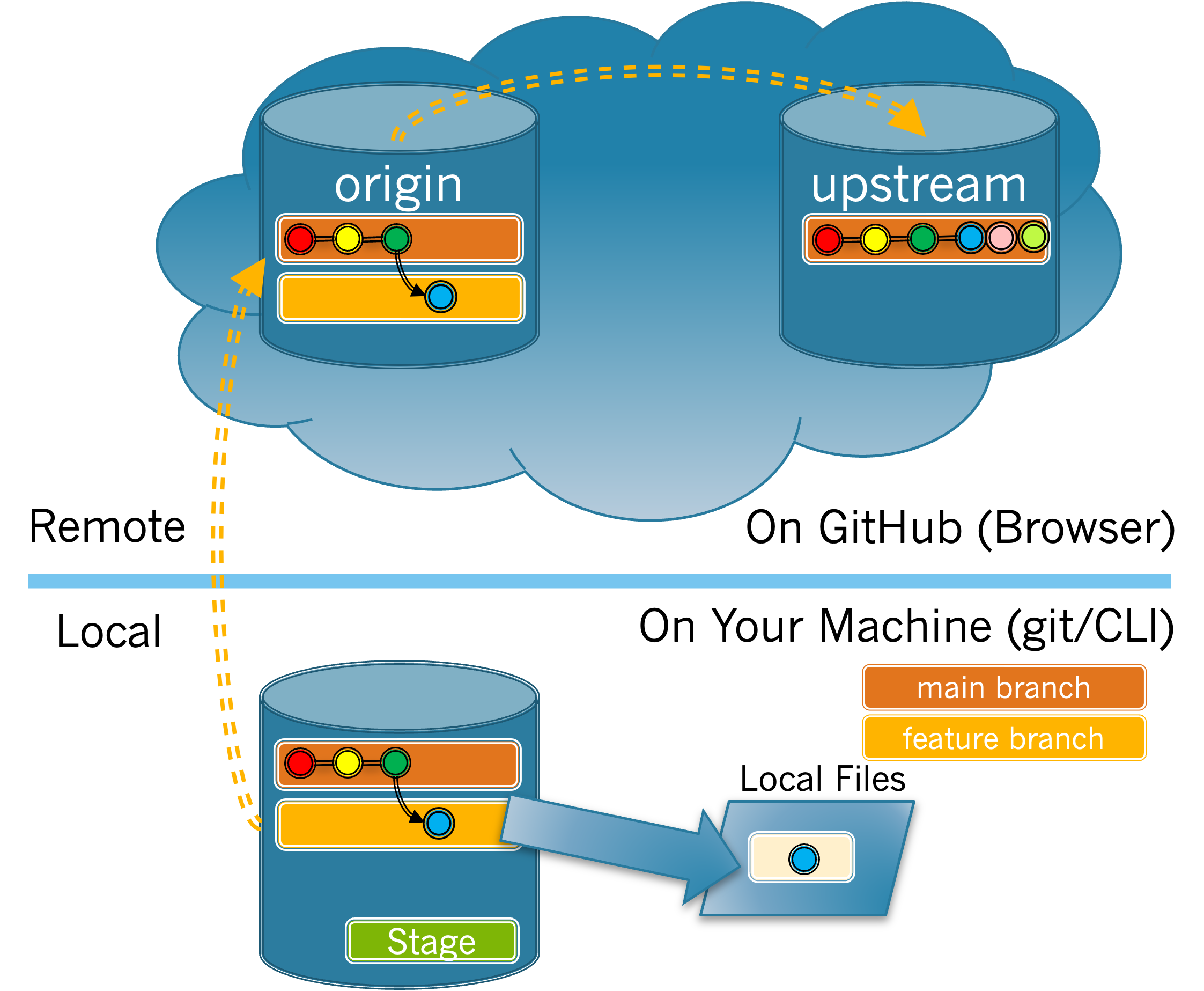1.
Answer the following questions using Figure 4.1.1
(a)
- Red
- Yellow
- Green
- Blue
- Pink
- Lime Green
Which commits (give the colors) were merged into the upstream
main since the contributor created the feature branch that is shown?Hint.
Look at which commits are new in upstream that are not part of the local repository’s
main or feature branch.(b)
- Red
- Red was in
mainprior to the contributor creating the feature branch. - Yellow
- Yellow was in
mainprior to the contributor creating the feature branch. - Green
- Green was in
mainprior to the contributor creating the feature branch. - Blue
- Blue was part of the contributor’s feature branch.
- Pink
- Pink was part of another contributor’s pull request.
- Lime Green
- Lime green was part of another contributor’s pull request.
Which of the commits did the managers merge from the contributor’s pull request?
Hint.
Look at which commits are in the local repository’s feature branch.
(c)
Briefly explain how the pink commit could have gotten into the upstream
main.
